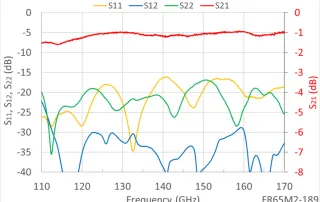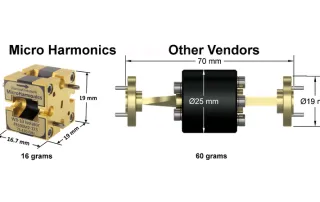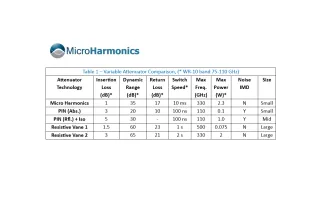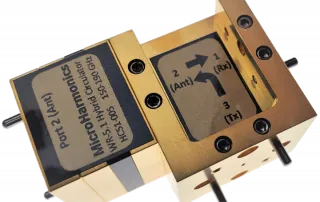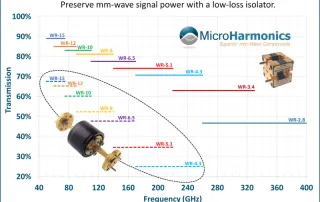The Difficulties in Writing Specifications for Millimeter-Wave Components
The Difficulties in Writing Specifications for Millimeter-Wave Components Introduction We often accept a manufacturer’s specification of their millimeter wave components without a second thought. But a survey of the industry will reveal that what one manufacturer means by, for example, “20 dB isolation” could be a very different standard of performance from another manufacturer who makes the same claim. This is partially because of inherent difficulties [...]
How to Choose an Isolator for a Millimeter-Wave System
How to Choose an Isolator for a Millimeter-Wave System Millimeter-wave (MMW) systems often employ isolators to suppress standing waves and achieve optimal performance. Isolators pass an RF signal traveling in the forward direction while absorbing signals traveling in the reverse direction. The absorbed signal is converted to heat energy in a resistive load internal to the isolator. There are a number of ways to implement [...]
A Comparison of Millimeter-Wave Variable Attenuator Technologies
A Comparison of Millimeter-Wave Variable Attenuator Technologies Electronically tunable variable attenuators are useful for signal leveling and switching applications. The desirable characteristics of an attenuator are typically high power handling, high dynamic range, high return loss (low port reflections), a high degree of flatness in the response across the band, low insertion loss, and broad bandwidth. Size, weight, switching speed, and intermodulation distortion (IMD) can [...]
Advantages of the Hybrid Circulator
Advantages of the Hybrid Circulator Introduction Circulators are 3 port components that couple power in a circulating fashion: power from port 1 is coupled to port 2, from port 2 to port 3, and from port 3 to port 1. Circulators are widely deployed in communications and radar systems because they enable a system architecture whereby a single antenna (or array of antennas) can [...]
What is Faraday Rotation?
Faraday Rotation: What is it? Most microwave engineers have not studied ferrite components even if they have taken microwave engineering graduate classes. If you did take a microwave engineering course, the chapter about ferrimagnetic components was most likely near the end of the book, and you probably were glad of it! After all, every component up to that point was reciprocal – acting the [...]
Low Insertion Loss, High Power Handling, and Test Data: Why They Matter
Low Insertion Loss, High Power Handling, and Test Data: Why They Matter Millimeter-wave (MMW) systems often employ isolators to suppress standing waves and achieve optimal performance. Commercial isolators provide good isolation, typically more than 20 dB across full waveguide bands at lower frequencies (under about 85 GHz), and they also tend to have low port reflections. However, at MMW frequencies there is a great divide [...]

